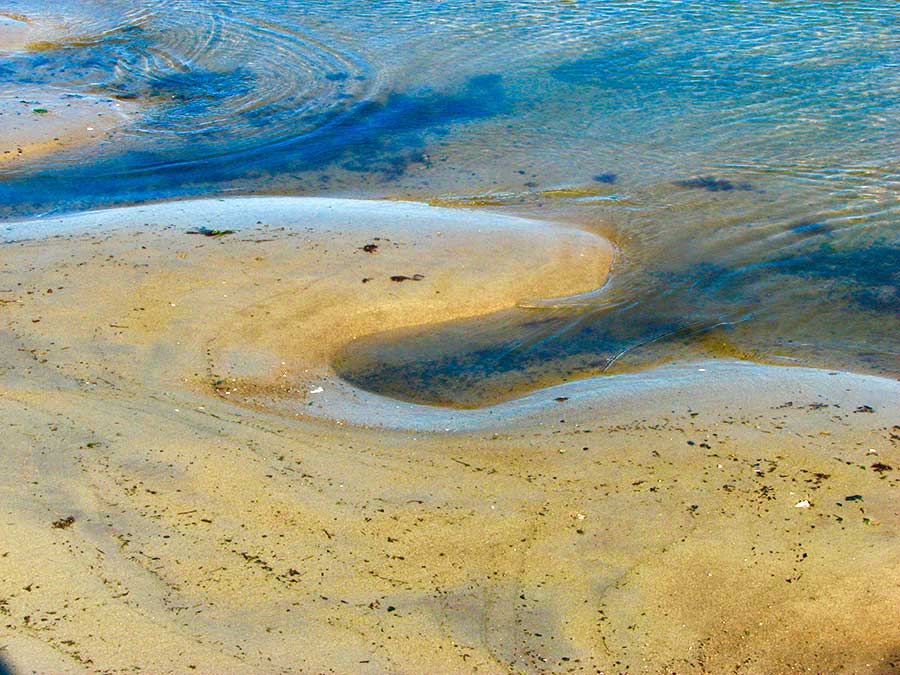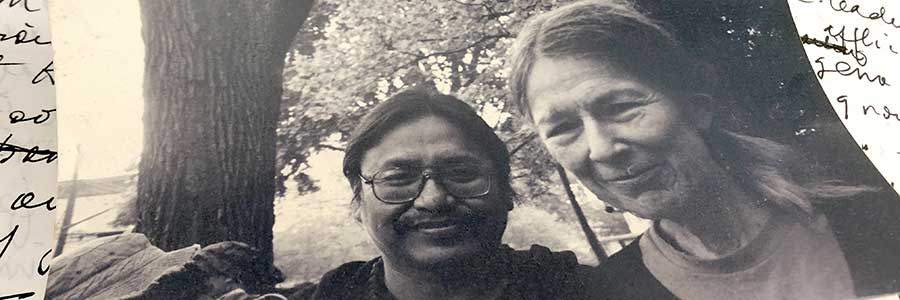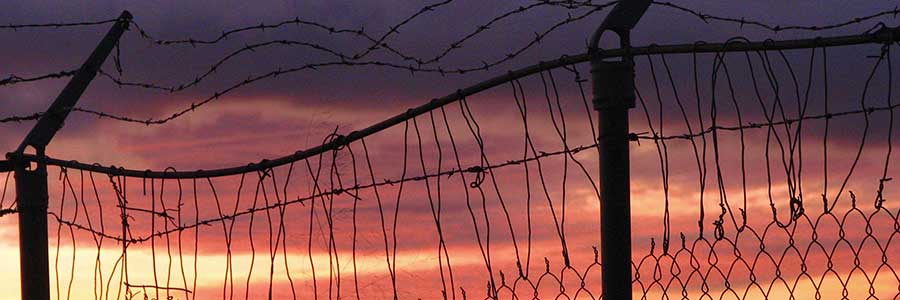
A dream came weeks before we knew how serious the pandemic would be, much less the nightmare police killings and the uprising to preserve Black and Brown lives. I knew this dream was about something big but back then it was hard to know how big. In the dream, I was floating through moving water at the eastern edge of the continent, in a huge tidal river making its way through a city to the ocean. Other floaters at a distance, all of us picking up speed, no way to stay near land or the familiar. There was fear in me but also awe—floating in this other-worldly water suffused with light. In the morning, I remembered dreaming of water like this forty years ago in a personal crisis. Then I’d leapt in, surprised by trust as the flow held me safely where I knew I was meant to be.
There was an earlier dream of powerful waters during the long years I lived in Massachusetts unaware of my family’s history there but always drawn to Cape Cod. Small pines and sandy soil from ancient glaciers, so much like my beloved California mountains. Over and over I returned to the dunes and tidal marshes of the outer cape and formed a deep bond with the National Seashore, where trails led out past Nauset Marsh to shifting sand bars at the ocean boundary—a beautiful nexus of tidal currents, ocean waves and mysterious flows of water. A place like no other I’d known in my lifetime, but maybe further back.
In my dream of that place I saw green reeds with roots buried deep under the rising tide, currents weaving their way laterally, across the wide expanse of the marsh. I was not in the waters of this dream but viewing them from somewhere above and low to the western horizon, perhaps from one of those rare hills in this relatively flat expanse. From there I saw canoes moving deftly across the marsh, canoes of the First People, two or three of them, plying the currents together, moving freely across the view-scape as they had before the Europeans came. That was the entire dream as I remember it now.
But the imagery stayed with me—canoes and People in sync with water, land and sky in a rhythmic, natural and powerful way that told me this dream had come from spirit, not my cluttered mind. At the same time, there was something ominous, a threat to the harmony of the canoe people, which I felt compelled to explore. I didn’t know then that my lifetime task would be to trace America’s story of racial karma back to this site, and that I would find my own ancestors among the perpetrators here.
Slowly pursuing the history of this place, I learned that French explorers had brought their ships into Nauset Bay in July of 1604 despite currents they thought dangerous. They reported villages all along the shore amidst lush corn and vegetable gardens. Marching to these villages in war regalia, they helped themselves to crops, turning friendly relations sour and prompting violence and loss of life that worsened on later French voyages. English ships, too, wreaked havoc in the area, one abducting thirty Wampanoag people as slaves. The ships also brought invisible harm. By the time the Mayflower landed near here in 1620, the entire coastal area of what is now Massachusetts had been devastated by three years of European disease—an epidemic that killed 90% in many villages, possibly with the smallpox virus. Before landing in Plymouth Harbor, the Pilgrims spent a month exploring the outer Cape, finding abandoned villages and grave mounds. Writing later, they admitted stealing Native seed corn and robbing a grave.
I wondered how our founders had responded to the pall of death that lay over the land. Their own mortality in this moment was also alarming. Fully half of them would die of scurvy, pneumonia, and TB by the time they left their crowded ship in the spring and went ashore where a Wampanoag village had been destroyed in the epidemic. Their thought-leaders somehow turned Indigenous death tolls into a salve for their losses—the story that God had blessed their colony by clearing the land for them, as the Bible said he had done for the Israelites. This twist on the Doctrine of Discovery became our founding mythology. Christian Europeans were destined to dominate Indigenous people and their land. Pandemic opened the way for colonization.
Around the beginning of 2020—the year the 400th anniversary of the Mayflower was to be celebrated—I learned from fine print in a family genealogy that six of my blood ancestors had been on that ship. Two had taken part in an exploration that exchanged fire with a small band of the Nauset people not all that far from the setting of my dream. So my own kin had brought violence to the world I’d dreamed about, and set the template for a nation with democracy for some—extermination and enslavement for others.
As I learned all this, and as many prepared to celebrate the founding moment of the Pilgrim landing, the COVID 19 pandemic set in. Its global reach disrupting the world we knew—not just our jobs, health and equanimity but the extractive systems that had grown from colonial violence. Because of the long legacy of harm, the sickness took a heavier toll on darker-skinned peoples. In the shadow of this pandemic, our national government also sought to remove the last remaining land from the Wampanoag people, the ones who helped my ancestors learn to grow crops for survival.
Alongside widespread activism, the courts upheld Wampanoag sovereignty. But by that time—pandemic still raging world-wide and climate catastrophe merely paused, not reversed—our country faced another epidemic of deadly violence toward Black and Brown bodies. Hundreds of thousands marched in the streets defying curfews, and millions of European descent began to ask themselves: why? How am I complicit in this long legacy of violence? Is it true that Black and Brown bodies have NEVER been safe here since European settlers claimed this land? What’s at the root here? Shawnee/Lenape scholar Steve Newcomb explains how “habitual thought processes” that come with the domination idea killed George Floyd in Minneapolis and will continue to threaten Black and Brown bodies until we can reach deep and change them in our national consciousness.
So why these dreams of flowing water? As the months go by and new dimensions of our historical moment rise into focus, I’m seeing the wider meaning of these dreams. Peruvian ceremonial leader, Arkan Lushwala, says we’re experiencing the coming around of a cycle that began 500 years ago with the violence of colonization. Forces greater than we can understand are sweeping through to right the terrible imbalances to earth and human life that we allowed to happen in this period. He suggests we listen deeply, now, to the earth and the forces of nature to learn our direction, to reengage with the understandings we had thousands of years ago.
I think that’s why I write about the waters and the tides. Surrendering to them doesn’t mean to stop acting for repair but puts me in touch with a powerful force we can trust and work with. People talk about using the moment to create a sustainable world without the injustices that colonizer mind built into this one. It’s huge, but it looks like people are finding ways to do this. My dreams tell me my part is to look back at where we went wrong—to acknowledge, grieve and change our deepest thinking so we can repair the harm. If I could, I’d join the prayer walk taking shape in Massachusetts to remember “the great dying” and the deepest meaning of the Mayflower landing on this continent.




as usual with you, louise, the big picture emerges from the smaller one.
Hi Louise this is Lourdes Ramos from Napa, do you remember me? Your mom’s cleaning girl and a friend 💞I will love to get in touch with you….. I have some books that belong to your family….. God bless you!
Hi Lourdes! I would love to be in touch but when I send an email to the address you gave, it bounces back. Try me directly at louise@louisedunlap.net. Thank you!
Reading this and loving your writing, Louise, and loving you.
as i wrote when forwarding to facebook and twitter, dreams as omens and goads to action. once again, louise, you evoke the power of earth.